When it comes to land restrictions and closures, Cal Rakach has just about seen it all.
As a past president and regional director for the Alberta Off-Highway Vehicle Association, Rakach has been fighting a 25-year battle to protect and enhance Alberta’s ATV trails—particularly in the Bighorn Backcountry. It hasn’t been easy, but it’s a fight he and other members of the Bighorn Heritage ATV Society (BHAS) aren’t willing to give up.
Rakach lives in Sundre, so the Bighorn Backcountry is only 30 minutes from his home. This 5,000-square-kilometre area is covered in pristine mountains, meadows, foothills and lakes. Four of Alberta’s most significant rivers (the Red Deer, Clearwater, North Saskatchewan and Brazeau) run through it as well. For reasons any ATVer can understand, the Bighorn is a popular area to ride.
A call to action
At one point in time, and not so long ago, motorized recreation in the Bighorn Backcountry almost ceased to exist. That’s when the BHAS stepped in.
“In about 2000, the government actually wanted to turn it into a park,” said Rakach, “which would have eliminated a lot of users—motorized for starters.”
Backed by about 200 members, the BHAS was able to provide a strong enough voice to halt those plans. Instead, the Bighorn Backcountry was divided into six public land use zones. Any motorized trails in the Kiska/Wilson and Upper Clearwater zones are managed by the BHAS, which means the club works hard to meet this responsibility.
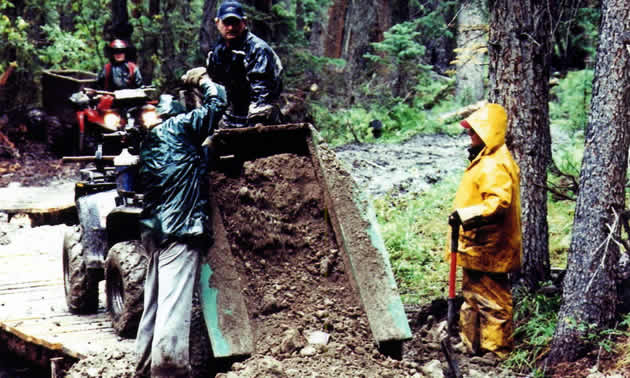
The club is based purely on volunteers and donations. — photo courtesy BHAS
At first, all the work was done by hand, but things have gotten easier now that members have access to heavy equipment.
“A bunch of them have bought their own front-end loaders and rubber-tired hoes so that they can do trail work and build bridges,” said Rakach. “The work they do is just outstanding. These guys take their holidays to go out and work. A lot of their own money goes into this.”
The club runs purely on volunteers and donations. Members work closely with other user groups, such as the Alberta Equestrian Federation and Friends of the Eastern Slopes, as well as local hunters and trappers.
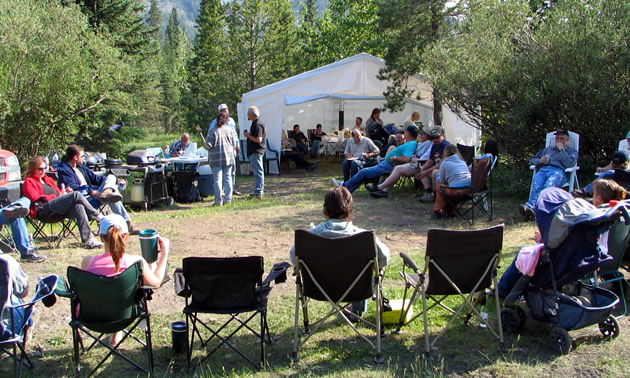
Many club members plan their holidays around work bees in the Bighorn Backcountry. — photo courtesy BHAS
Businesses throughout the communities of Sundre and Rocky Mountain House have been generous as well.
“There are contractors that provide materials, gravel and equipment,” said Rakach. “It’s a real community effort. It isn’t just the club—we’re just a piece of it.”
Working together for the greater good
Over the last 13 years, the club has been successful in keeping many trails open, but it’s an ongoing battle.
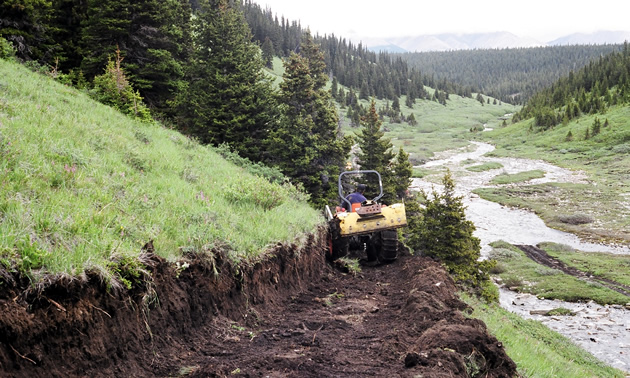
Bridges have been built and trails have been relocated to higher ground to keep traffic out of streams and sensitive areas. — photo courtesy BHAS
“You just have to keep showing up,” said Rakach. “Whenever any of these access plans come into place, you cannot walk away. Your guard has to be up constantly and that’s where strong clubs come in.”
With no immediate threats, the club’s membership has dwindled to only 30 individuals, but they are a core group of experienced trail stewards. And like Rakach said earlier, they aren’t the only ones working to protect their rights to the Bighorn Backcountry.
“We’ve also had huge support from our local ESRD (Alberta Environment and Sustainable Resource Development) folks who have been working hard to make this work for us,” said Rakach, and he later added, “Everyone works together for the greater good.”
Making sure the work is spread out evenly is important, because even the most passionate volunteer can burn out.
“I just went through a bad case of burnout,” said Rakach. “It happens and we lose people constantly.”
To avoid it, Rakach said each person has to weigh his or her priorities and try to find that balance between not doing anything and doing too much for the sport he or she loves.
“Each person has to measure that for themselves and make sure they have their balance in life. Hopefully, we bring up those who are following us so that they can be tomorrow’s leaders,” said Rakach.
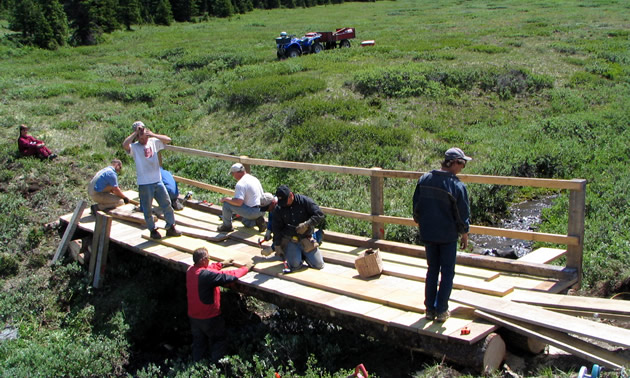
The BHAS is unlike any other ATV club we’ve profiled in the past. Instead of poker rides and fun runs, its activities are based on building bridges and reclaiming trails. — photo courtesy BHAS
Because to him, Alberta’s backcountry is something worth protecting.
“It’s my home and I’m going to stick up for it,” he said.
There’s strength in numbers
Sadly, land closures are a common theme across Western Canada. With more people than ever heading into the backcountry, there is heightened opportunity for conflicts to arise, and when they do, the higher ups are quick to take notice. Motorized recreation is often the first to suffer. But there is hope.
“Make friends; seek out those around you that are like-minded and nurture that,” said Rakach. “Definitely win the side of your municipal government, your county or your municipal district. Here in the Clearwater, our municipal council is completely on board and sometimes we fight about who is going to pay for a sign. It’s finding those people around you.”

Many ATVers currently enjoy the Bighorn Backcountry, and the BHAS wants to keep it that way. — photo courtesy BHAS
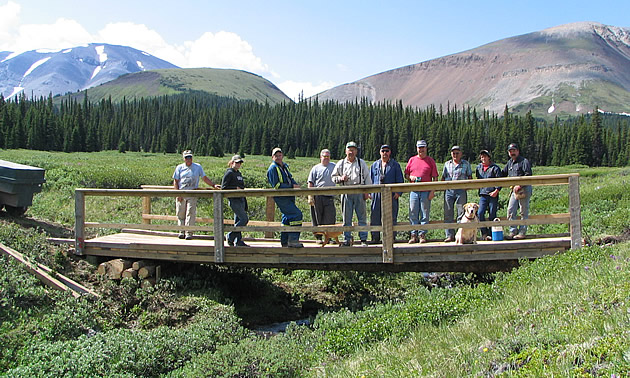



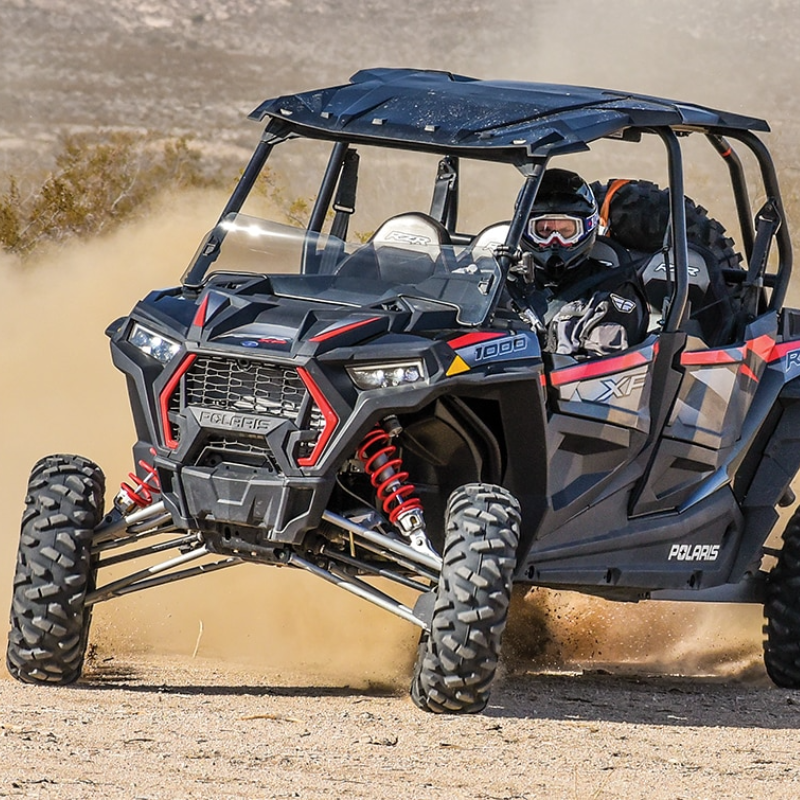



Comments